AI voice assistants can understand spoken commands and execute tasks like web searches, adjusting settings on home appliances, writing content, and more. There are loads of voice AI platforms, so picking the best ohone can be tough. That’s why I tested these platforms, tried the features, and ranked each one to make your life easier.
My top platforms are Alexa for home use and smart home devices, Siri for iOS users, and Otter AI for executing business-related tasks, such as taking meeting notes.
Read on to learn more about:
- How I chose my top 24 voice AI assistants
- Review of features and pricing of the top 24 AI voice assistants
- Why you should pick Lindy.ai as your AI platform
How I chose the best AI voice assistants
First, I found loads of different AI voice assistant platforms, and boiled down my shortlist to 24 by actually testing them against these standards:
- Accuracy and responsiveness: I assessed how well the voice assistants understood and responded to various commands and queries. Then, I measured how quickly each assistant processed requests and delivered results. In my opinion, a high-performing AI voice assistant understands precisely what is being asked and responds instantly.
- Integration and compatibility: I examined how these assistants could be integrated with everyday devices. This ensured that each assistant could work across different operating systems without reconfiguration. I found that this ability is crucial for a voice assistant’s functionality and flexibility, as device types will vary greatly amongst users.
- Customization and AI learning: Each user will approach interacting with AI in a unique way. So, I looked for systems that allow you to customize voice options and language settings, as well as integrate personalized workflows. Additionally, I evaluated the AI's ability to adapt to my preferences and provide more accurate and personalized responses.
- Privacy and security: I considered how each system complied with privacy laws and regulations. I also focused on how the assistants encrypt and store user data, as well as their policies on sharing data with third parties. Then, I assessed each platform’s security measures against cyber threats, risks that we all face daily.
After determining which AI voice assistants conformed to my standards, I gave each one a score from 1 to 10. The platforms that earned under 7.5 points fell in the “Special Mention” category.
The 24 best AI voice assistants in 2025
- Alexa: Great for home use
- Siri: Best for Apple users
- Otter AI: Best business voice assistant
- Bixby Voice: Best for Samsung users
- Google Assistant: Great free voice assistant
- Retell AI: Good for customized voice assistants
- Braina from Brainasoft: Great for multitasking
Special mentions
- Mycroft
- Speechify
- Rabbit R1
- Whisper AI by OpenAI
- Play.AI
- Synthesys
- Deepgram AI
- Jasper AI
- Speechmatics
- Picovoice
- Voicemaker
- Nuance Dragon Assistant
- Voicera
- ELSA Speak
- Resemble AI
- Uberduck
- Fireflies.ai
1. Alexa: Great for home use

Score: 10/10
I own an Echo Third Gen speaker, and one of the first things I’ve noticed is that Alexa keeps evolving to meet several needs. This makes Alexa one of the most versatile AI voice assistants I’ve used.
Alexa also helps me manage a few of my home devices. Whenever I return home from work, I tell Alexa to turn on the lights in my living room. And instead of getting up from my couch and manually adjusting my thermostat, I just ask Alexa to adjust it to 68° — without pausing the latest episode of Black Mirror.
And I’ve used Alexa to set up a voice profile, so it only listens to my voice. After I implemented this feature, my buddy Harold was no longer able to command Alexa to switch the music from Thelonious Monk to Pantera during dinner parties.
Features
- Alexa is a responsive voice-activated agent — she plays my music, audiobooks, and podcasts from Amazon Music and Spotify with just a simple command.
- She can control your smart home like a boss, integrating with many different platforms, tools, and devices. For instance, I use Alexa to turn off the lights in my apartment.
- It helps you shop on Amazon, which is dangerously convenient but perfect for lazy days when you don’t care about getting your steps in.
- Offers fun skills, from guided meditations to silly games and interactive stories for kids. I’m personally a fan of the productivity hacks, which has helped me focus more time on my day-to-day content tasks.
Ideal users
Amazon Alexa, particularly with its Alexa+ upgrades, is suited for those seeking a deeply integrated smart home experience. It's great if you regularly interact with a variety of connected devices — from smart thermostats to advanced security systems like Ring.
Pricing
Alexa works best with an Amazon Echo device. Prices start at $30 for a single speaker and go up to over $1,500 for a complete smart home system.
Verdict
Alexa's greatest strength lies in its extensive integration capabilities and adaptive, user-centric approach to automation. However, Alexa’s boatloads of functionalities and features, especially those with Alexa+, have a steep learning curve — there are still a few functions that I’m continuing to wrap my brain around.
2. Siri: Best for Apple users
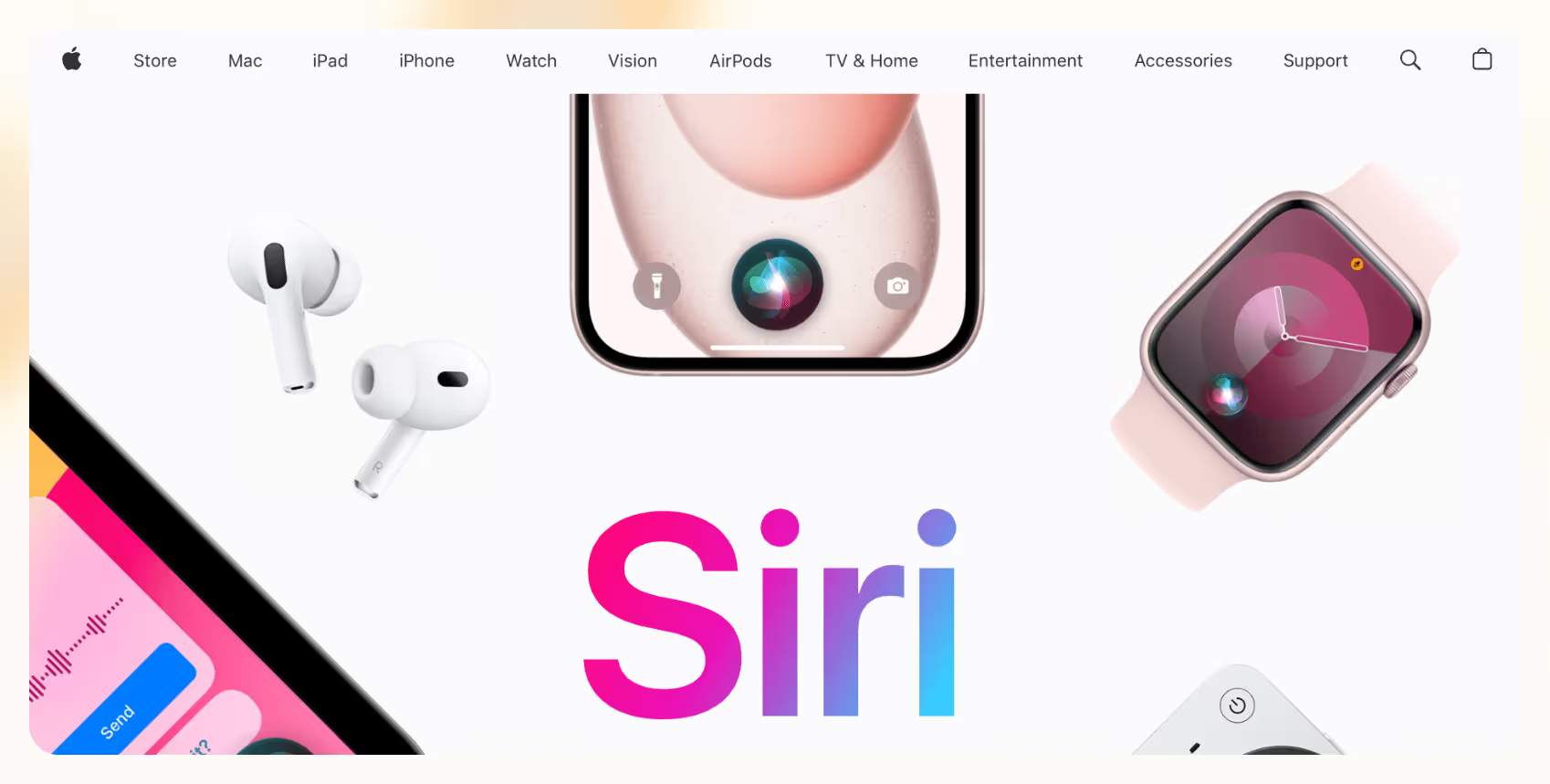
Score: 9.5/10
Siri is one of the first AI assistants, and it’s an exclusive platform for iOS users like me. If you're firmly entrenched in the Apple ecosystem, she's your go-to for getting things done. As someone who enjoys my iPhone and Apple Watch, I’ve found Siri to be the perfect hands-free assistant.
Whenever I’m out on a run, Siri helps track my pace, heart rate, and distance. I simply ask Siri for these metrics, and she responds moments later. This is very helpful for VO2 max training when I need to maintain a high heart rate.
Siri also saves me the time it takes to open my phone, fumble around to Maps, and type in “nearest café” when I need a jolt of caffeine. I simply ask Siri for the nearest café, and she immediately responds with directions to the closest coffee shop.
Features
- Provides you with the latest news with a healthy dose of attitude, sports scores, and weather updates. Plus, you can set personalized news updates, which Siri can deliver to you daily. For instance, Siri provides me with a daily update on news related to my stocks.
- Plays your favorite tunes and podcasts from Apple Music — you can even set different podcasts and playlists to start at specified times.
- Integrates with your Apple-friendly smart home devices. Whenever I’m away from my iPhone, I can speak to Siri “remotely” via my Apple Watch.
Ideal users
It’s ideal for Apple fanatics, as you can also use it to manage a smart home setup through Home app. Siri ties everything together in a way that feels seamless.
Pricing
Siri comes free with your iPhone, iPad, or other Apple gear — no extra charge for the occasional side-eye.
Verdict
Siri is excellent for integrating with the iOS ecosystem, however, it’s less effective outside the Apple ecosystem. Yet, if you’re concerned about privacy, consider Siri and the Apple ecosystem: Processing stays on-device when possible, and Apple doesn’t monetize personal data.
3. Otter AI: The best business voice assistant
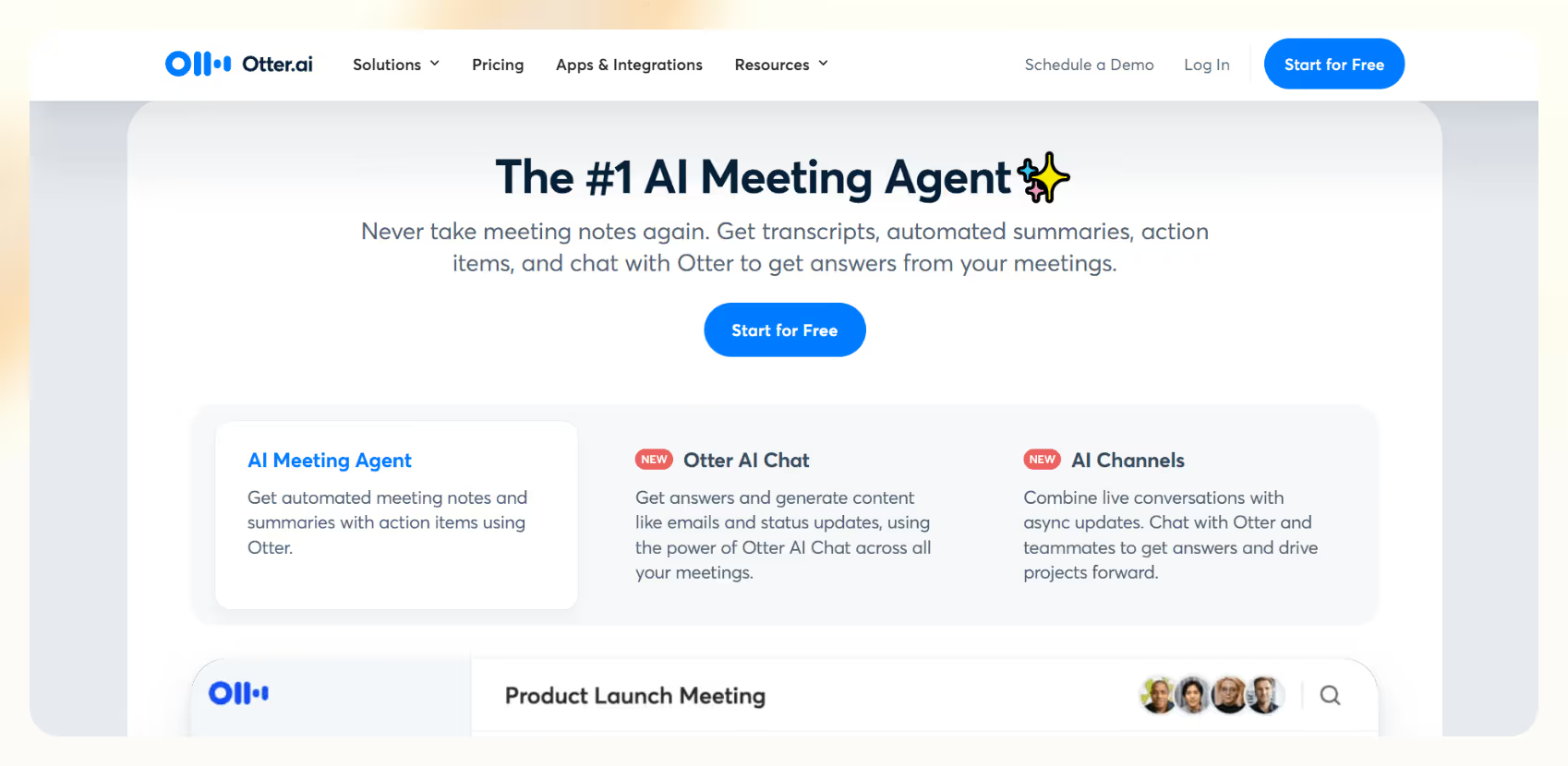
Score: 9.5/10
I tried Otter.ai for a few meetings and brainstorming sessions, and it provided accurate transcription notes. It boasts an intuitive interface, allowing me to replay audio while reading the transcript, edit any errors, and share notes with my team.
Before meetings, I scheduled the Otter Assistant to auto-join my Google Meet call. When the meeting started, Otter began capturing every speaker and converting their audio into text in real-time, which I could see in the text box on the app.
After the meeting, I distilled the notes into easy-to-read bullet points by hitting the “Generate Summary” button. It also produced actionable items, like finishing our proposal by Friday. Then, I saved the file as a PDF and sent a copy to my team’s Slack channel.
Features
- Otter’s AI Meeting Agent automatically joins Zoom, Google Meet, or Microsoft Teams calls, transcribing everything as it happens, and generates concise summaries and action items. This helped me better understand others’ points of view.
- The platform features a speaker identification functionality, which can distinguish between voices and label them, making it great for multi-person meetings.
Ideal users
Otter.ai is ideal for individuals and teams who have frequent meetings and need to capture every detail without distraction. It’s also a fantastic tool for educators, students, and researchers — anyone who needs to transcribe lectures, interviews, or group discussions.
Pricing
The free version lets you transcribe meetings and lectures in languages like English, French, and Spanish. The Pro Plan, at $16.99/month lets you transcribe up to 1,200 minutes of voice entries.
Verdict
The biggest advantage is how it handled the note-taking, generated actionable summaries, and made it easy to review or share notes later. However, I found that transcription accuracy dropped when people with heavy accents spoke or there was background noise.
4. Bixby Voice: Best for Samsung users
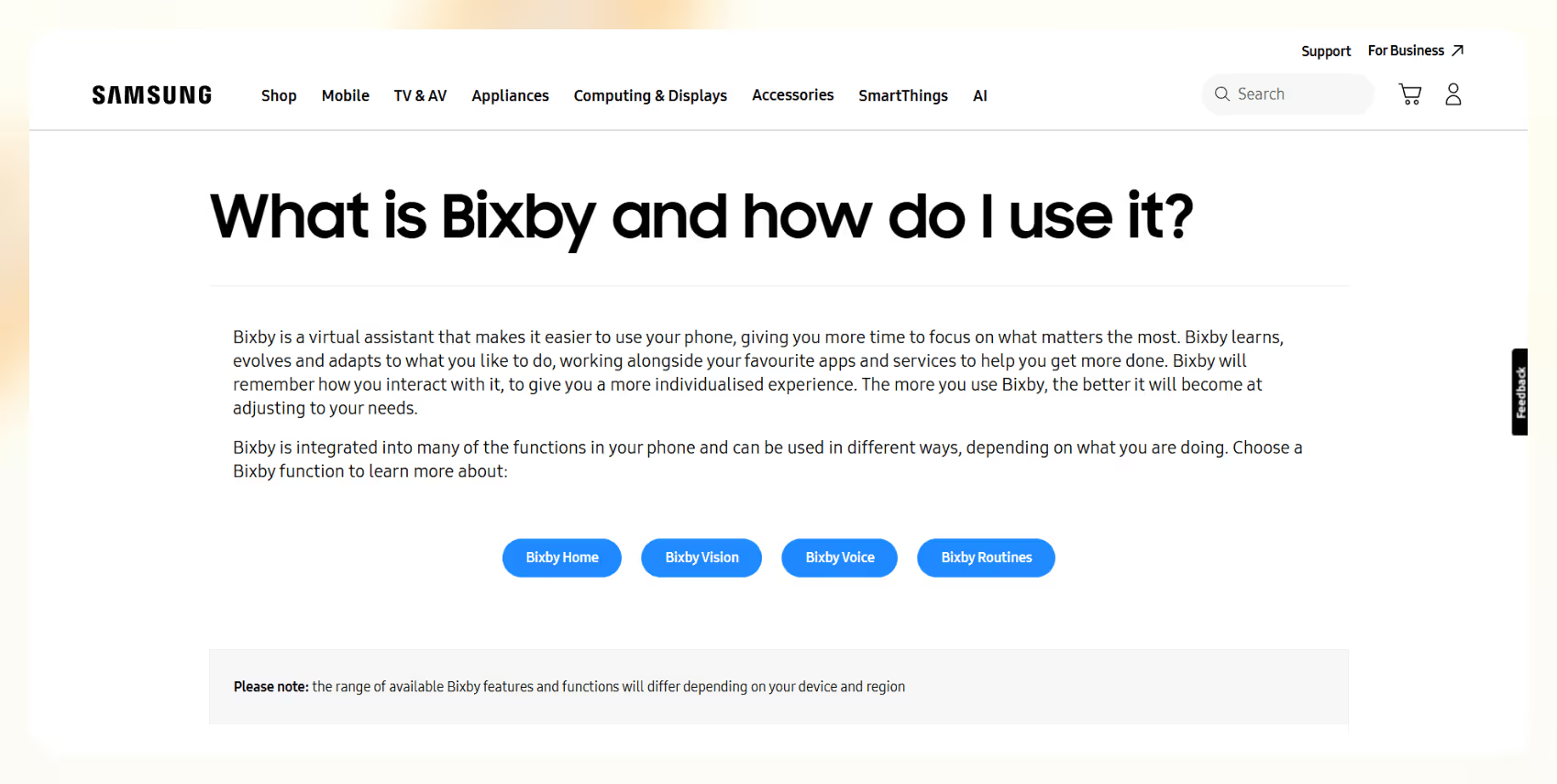
Score: 9/10
Since I own a Galaxy TV, I’ve been able to get a lot out of Bixby, Samsung’s built-in virtual assistant. It uses vision and context to help out, and I’ve noticed it learns my habits and adjusts to my preferences.
Every Saturday in the fall, I wake up and tell Bixby to show me the first college football game of the day. Whenever a commercial break starts, I tell her to switch to the next game I’m following. The bottom line: There’s no fumbling through channels or flipping through menus — I just say the command, and I’m watching the next play, not some fast-food commercial.
Features
- Bixby Voice enables hands-free device control, allowing you to send messages, get answers to questions, set reminders, and adjust settings simply by speaking. You can activate it by pressing the Bixby or side key or saying, “Hi Bixby.”
- It supports quick commands, which let you customize and bundle multiple actions under a single phrase. For instance, when you say “Good night,” Bixby can mute notifications, enable night mode, set your alarm for the next day, and change lock screen shortcuts.
Ideal Users
Bixby is ideal for Samsung Galaxy users who want a deeply integrated assistant to simplify daily tasks, automate routines, and control their devices. Although I only use a Samsung TV, it would be great if you use multiple Samsung devices, as Bixby facilitates seamless interaction across phones, tablets, wearables, and connected appliances like your washer, dryer, or refrigerator.
Pricing
Bixby is included at no additional cost on compatible Samsung devices, with no subscription fee or separate charges.
The Bottom Line
Bixby stands out for its integrations with Samsung devices and ability to learn and adapt to user preferences, offering a personalized and assistant experience. However, Bixby’s usefulness is limited to the Samsung ecosystem only.
5. Google Assistant: A great free voice assistant

Score: 8.5/10
I tried Google Assistant and was impressed with its speed, versatility, and the ability to integrate across Android devices. It could conduct rapid web searches for info while managing and making changes to my schedule.
I tapped into Google Assistant on my iPhone to manage my calendar. It was able to sync my work calendar, which I use on iOS, with my own. When my client pushed a meeting back to Friday, I simply commanded Google to make the change. Google Assistant updated the change across my devices without opening a single app.
Features
- If you’re an Android user, Google Assistant can control your smart home devices, like thermostats, lights, and speakers (Google Assistant can even sync with Nest devices).
- I was able to pull up any web-based information with just a simple command — weather updates, trivia, directions, or sports scores (Google knows it all). It also helped me with my Mandarin studies by translating tough sentences and explaining the grammar.
- You can play music, videos, and podcasts from your favorite apps like YouTube, Spotify, etc.
Ideal users
Google Assistant is ideally suited for Android purists. Its seamless integration across a wide range of Android devices — such as Android smartphones, Google Nest smart speakers, and compatible smart home devices — makes it a versatile choice.
Pricing
Google Assistant is free to use on Android devices and available as an app for iPhone users. If you don’t want to shell out cash, Google Assistant is always a pretty decent choice.
Verdict
While using Google Assistant, I found it to be incredibly fluid and reliable, mainly because it ties in so well with all of Google’s services. That said, privacy is indeed a legitimate concern, since it collects and processes a lot of personal data to tailor the experience.
{{templates}}
6. Retell AI: Good for customized voice assistants
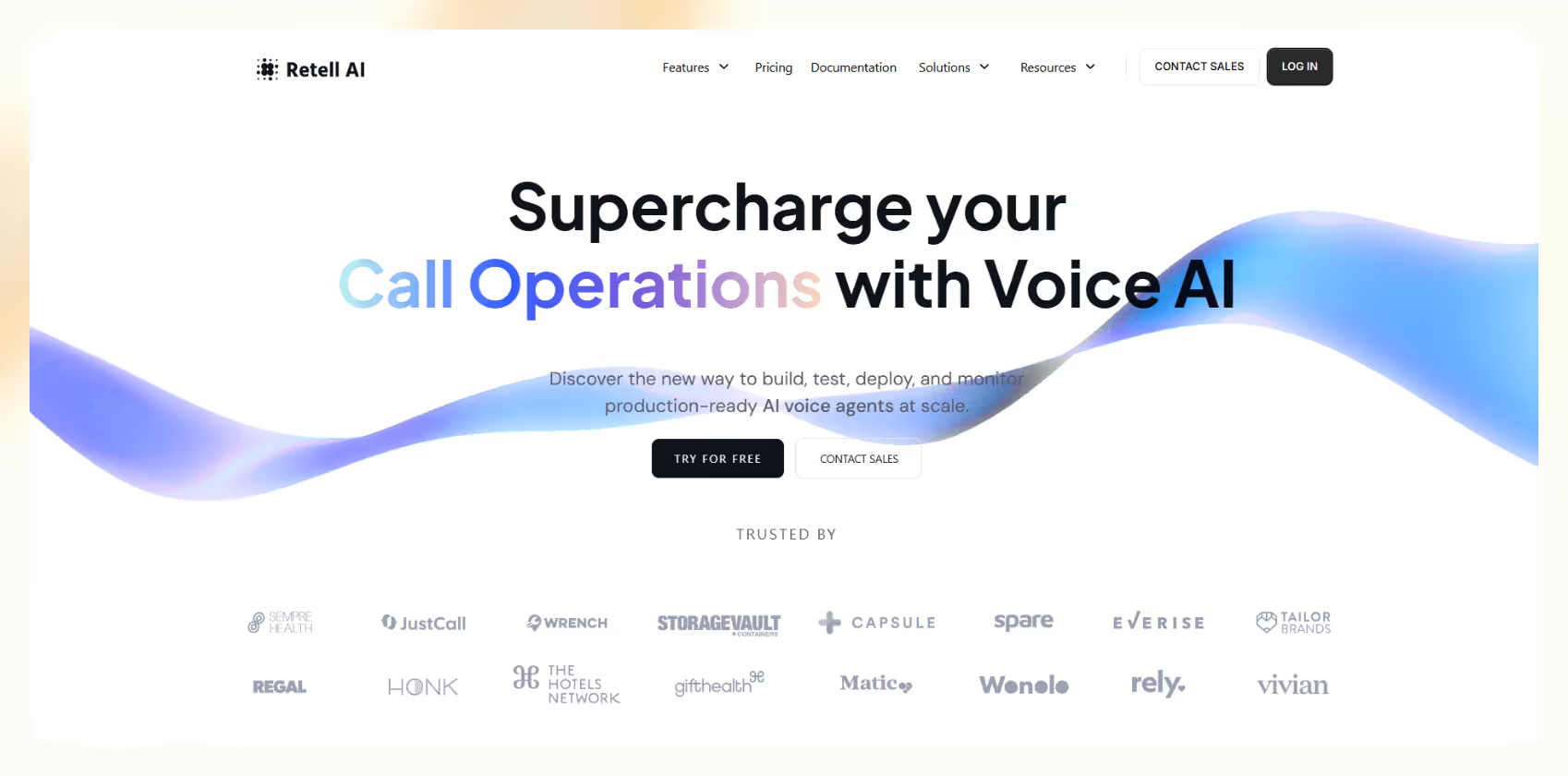
Score: 8/10
I tried the Retell AI free version, which let me build a custom AI assistant tailored to exactly what I want. It’s a DIY approach, which gave me a lot of flexibility. Talking to Retell was natural, making the whole experience feel more intuitive and personal.
Using Retell AI’s visual agent builder, I crafted a custom personal assistant. Then, I commanded it to import our company’s internal documentation and set up an Auto-Sync Knowledge Base. This way, the agent would learn new company info immediately, so it could always pull the latest answers without needing manual updates.
My Retell assistant was programmed to answer general questions that a newly onboarded employee might have. It could answer anything from how to approach a client in the finance industry to billing procedures and how to request time off.
Features
- You can design your assistant's personality and voice and then determine what tasks it can perform.
- Integrate with your existing smart devices and services, but you’ll need some coding know-how to do this.
- Businesses prioritizing data security and compliance, especially in sectors like healthcare, will appreciate Retell AI's HIPAA compliance.
Ideal users
Retell AI is designed for businesses seeking to bolster call operations through AI-driven voice agents. If you aim to automate tasks such as appointment scheduling, lead qualification, customer support, and reception services, the platform is ideal.
Pricing
Retell AI has a free tier to get started and a pay-as-you-go model that’s $0.002 to 0.006/min. You can add special features, like a connection with OpenAI Voices, for another $0.08/minute.
Verdict
Retell AI offers a suite of features that streamline voice operations and can handle concurrent calls, which is great for customer engagement. However, connecting with other third-party platforms was difficult for me, so you’ll probably need some development skills for deep integration.
7. Braina from Brainsoft: Great for multitasking

Score: 7.5/10
I used Braina (short for Brain Artificial) for voice commands and general productivity tasks, like transcribing to-do lists. It was also useful for touchless web searches and transcribing text messages and emails.
By speaking naturally into my phone, Braina’s Voice Typing features helped me write to-do lists and draft emails, all without laying a finger on my cumbersome screen keyboard. I was impressed by how it handled transcribing long grocery lists and lengthy emails with impressive accuracy.
Another perk I really enjoyed about Braina: It can dictate text in over 100 languages, making it a versatile tool — it helped write out my spoken sentences in Mandarin so I could study the characters.
Features
- Braina executes tasks on your PC using voice commands, like launching apps, opening websites, and performing searches.
- Controls smart devices and manages your smart home setup with ease.
- It helps with calculations, search queries, and scheduling tasks, making it perfect for both personal and professional use.
Ideal users
Braina is particularly suited for professionals and businesses who require accurate dictation in industries such as medicine, law, and other scientific fields.
Pricing
Braina has a free version, but to unlock its full feature set, the Pro version starts at $99/year, which includes better voice recognition and PC control features.
Verdict
I found that Braina bolstered my productivity when I used it for dictation and voice commands. That said, it’s only compatible with Windows PCs, limiting its use for those who use other platforms, like iOS.
Special-mention AI voice assistants of 2025
The following voice AI assistants didn’t quite beat the top 7. But these are all worth a look, so I reviewed each one anyway.
8. Mycroft
Mycroft is an open-source voice assistant designed for users who prioritize privacy. It can be integrated into various devices, from desktops to IoT devices. I tapped into dozens of community-built skills from the Mycroft-skills repository to fetch reports on my stocks.
That said, Mycroft can feel rough around the edges compared to Alexa or Google Assistant — you’ll need to customize everything yourself. And, you must have some experience with Python to use the platform — it’s not for beginners.
9. Speechify
Speechify’s strengths lie in its premium feature set: over 200 natural, human-sounding voices across more than 60 languages, plus the ability to listen at speeds up to 5 times faster. On the flip side, Speechify’s free tier feels very limited: you only get 10 basic voices, 1x listening speed, and no offline access.
10. Rabbit R1
I borrowed a Rabbit R1 from one of my colleagues. I tested its compact, pocket-friendly design and push-to-talk button. The Rabbit OS activates instantly, handling tasks like booking rides, translations, and recipe suggestions. It also uses a rotating camera, allowing the AI to identify objects and items.
If you’re into gadgets, you might want to shortlist the Rabbit R1, but most will probably be better served by going with a SaaS-based AI voice assistant that you can download directly to your phone.
11. Whisper AI by OpenAI
Whisper is an automatic speech recognition (ASR) system developed by OpenAI, the makers of ChatGPT. I was impressed with its ability to understand accents and technical language while filtering out background noise.
Yet, Whisper doesn’t match the peak accuracy of commercial assistants like Alexa or Siri for real-time voice commands. The requirement to process audio in 30‑second chunks can also disrupt context for more extended conversations or recordings, which can be a problem if you’re aiming for continuous transcription workflows.
12. Play.AI
Play.AI stood out for its ultra-realistic voices and multilingual support. I used it to create voiceovers for a training video with over 900 voices that supported emotional inflection, like whispering or excitement. The built-in pronunciation editor was invaluable, ensuring brand names and technical terms were spot-on.
But its interface, while packed with options, is a bit complex and takes some time to figure out.
13. Synthesys
I used Synthesys to generate AI voiceovers for marketing videos with virtual human avatars. It was easy to choose a lifelike avatar, type out a script, and then create a video with synced lip movements and natural speech.
However, the customization options for their tone, gestures, and pacing were limited. And if you’re looking for deeper control over emotional delivery or more expressive performances, Synthesys might feel a bit rigid compared to some other tools.
14. Deepgram
I used Deepgram for transcribing recorded interviews, and was impressed by its speed and accuracy. But, there's a learning curve if you're not comfortable working with API endpoints and JSON responses. For basic users or solo creators, tools with built-in interfaces like Otter.ai or Descript might feel more accessible out of the box.
15. Jasper AI Voice
I used Jasper’s voice agent to automate customer interactions on my website, and I was genuinely impressed by how natural and on-brand the conversations felt. With the ability to upload tone-of-voice guides, Jasper adapted to my company’s style and could answer FAQs, qualify leads, and offer product suggestions.
That said, Jasper’s voice agent isn’t as plug-and-play as some competitors. You’ll get the best results only after fine-tuning your brand voice. To do so, you’ll need to be familiar with prompt engineering and customer journey mapping. If these are new concepts to you, the setup will probably be overwhelming.
16. Speechmatics
Speechmatics offers a flexible speech-to-text API that integrates into various services, solutions, and applications. Using some of my tech know-how, I connected my Speechmatics account to Notion and Zapier. This allowed for automatic meeting transcription and notes organization.
But if you’re unfamiliar with APIs and how they work, you’ll struggle with Speechmatics, as it’s a platform geared toward tech enthusiasts.
17. Picovoice
With Picovoice, I built and embedded a custom voice command system into a native mobile app my friend made. It ran locally on the device, which meant zero latency and full offline functionality, reminding me of the smoothness and control of on-prem software.
As you might expect, getting everything up and running wasn’t beginner-friendly. If you’re not comfortable with Python, JavaScript, or mobile frameworks like React Native, this platform is out of reach.
18. Voicemaker
I used Voicemaker to convert a few written articles into audio format, and I was impressed by the clarity and customization it offered. I could tweak voice speed, pitch, emphasis, and pauses using SSML tags to make the narration sound more natural.
The main downside is the bare-bones user interface — it gets the job done, but doesn’t feel modern or polished. And the voices lack some of the advanced emotional range and realism that premium tools offer.
19. Nuance Dragon Assistant
I used Nuance Dragon for some dictations, and the voice recognition was incredibly accurate, even with long, complex sentences. The built-in voice commands let me shuffle between apps and edit text with phrases like “select previous paragraph” or “insert bullet list,” streamlining my workflow dramatically.
But Dragon does come with a learning curve. Setting up custom commands and managing vocab lists takes some patience, which would probably pose some difficulties if you’re not tech-savvy.
20. Voicera
I used Voicera to transform a few written social posts into audio blurbs. After simply pasting a URL, choosing a voice, and generating an embed-ready audio player within seconds, my audio content was ready to go.
Yet, Voicera relies on HTML embed support, which means that it doesn’t work with non-HTML platforms like Medium or Substack.
21. ELSA Speak
ELSA Speak is an AI-powered English learning app. It helps non-native speakers improve their English by improving pronunciation, fluency, and communication skills through personalized, real-time feedback.
Although I’m a fluent English speaker, I decided to see how big an impact AI was having on the English as a second language industry. While testing it out, I opted for an interactive role-play, where I ordered barbecue at a Texas restaurant to build my vocabulary. I was able to talk to the server about several different cuts of steak and other items on the menu.
However, feedback sometimes felt a bit mechanical, and it was limited to my chosen scenario, which was at the restaurant. For instance, I wasn’t able to get the server’s opinion about whether the University of Texas Longhorns could win the SEC next year — it just told me that their lean brisket is cut from Longhorns. Maybe that’s a sign.
22. Resemble AI
I used Resemble to create a voice clone for a podcast character, and the results were surprisingly lifelike. I could even add emotional tones like joy or sadness by moving a button on a slider.
However, the interface felt more tailored to developers than casual users — especially when integrating with external apps via API.
23. Uberduck
Uberduck creates musical vocals and rap from spoken text. I used it to lay down a few AI-generated hip-hop verses for a marketing campaign on Instagram, and it was a blast. The rap generator even handled rhythm and rhyming flows surprisingly well, syncing the voice to beats I uploaded.
That said, Uberduck isn’t always the most polished tool. While the voice library is substantial, many voices sound either exaggerated or flat-out robotic — especially outside of the rap feature.
24. Fireflies.ai
I used Fireflies.ai to transcribe and summarize several client meetings by connecting it to my Zoom account. Within minutes after the call, I had a clean transcript with action items, keyword highlights, and even sentiment analysis.
But, the transcription wasn’t always perfect in group discussions with cross-talk or heavy accents. Occasionally, names were mismatched or action items weren't tagged correctly unless I edited them manually, which made it less seamless than other voice-AI note-takers.
What is an AI voice assistant?
An AI voice assistant is a software application that’s powered by artificial intelligence. This enables it to respond to voice commands using voice recognition, natural language processing (NLP), and AI-powered text-to-speech to understand and respond to your spoken instructions.
While early voice assistants were glorified chatbots, today's AI models are far more advanced. They can understand complex commands, access vast amounts of data, and even sound convincingly human.
Here’s how they handle your voice commands:
- Speech recognition: AI voice assistants use speech recognition to turn your spoken words into text. This involves analyzing the sound waves of your speech, breaking them down into phonemes, and predicting what was said using machine learning algorithms like the Hidden Markov Model.
- Natural language processing (NLP): Once your speech is transcribed, NLP helps the assistant interpret your request by understanding the structure and meaning behind the words. NLP focuses on intent recognition and extracting key information from your input.
- Machine learning and AI: These systems enable voice assistants to improve with each interaction. By learning from past interactions, they get better at recognizing patterns, understanding accents, and handling more complex requests.
By combining these technologies, AI voice assistants can accelerate your business operations, freeing up your time.
{{cta}}
Try Lindy: More than a voice AI assistant
Lindy is a conversational AI platform that lets you create your own AI agents, called Lindies, without using any coding. Like an AI voice assistant, they can execute both personal and business tasks.
And, just like voice AI, Lindy can help bolster your productivity at work and in life. Here’s how:
- Solid inbox support: Lindy monitors your inbox, understands customer queries, and prioritizes the ones that need urgent responses, sending resolutions in a snap.
- Your own meeting note taker: Just like many voice AI platforms, Lindy can join Zoom and Teams meetings based on Google Calendar events, record and transcribe conversations, and draft meeting notes and actionable insights in Google Docs.
- Working day and night: Lindy offers 24/7 support, ensuring customers never face frustrating delays.
- A true linguist: Fluent in over 30 languages, Lindy’s phone agents can help you expand into new markets.
- Simple website chatbots: Create a Lindy chatbot that you can plug into your site with a simple code snippet. This Lindy can answer customer questions and detect when cases need to be escalated to real humans.
- Heaps of integrations: Through a partnership with Pipedream, Lindy integrates with over 2,500 third-party apps, providing access to more than 5,000 actions, including data transfer and automations. For instance, create a new record on Airtable whenever a customer pays you on Stripe, and then notify your finance team via Slack.
- Build agents fast: Lindy has a wide range of functions, from content creation to coding. The best part? They’re already built for you, as pre-made templates — you just need to customize them.
- Affordability: Run up to 400 tasks on Lindy’s free plan, and upgrade to the Pro version to automate up to 5,000 tasks. Compared to competitors, it’s an affordable way to complete a lot of monthly tasks.
Ready to see how Lindy can complement your voice AI assistant? Try Lindy for free




















.jpg)
.png)
.png)

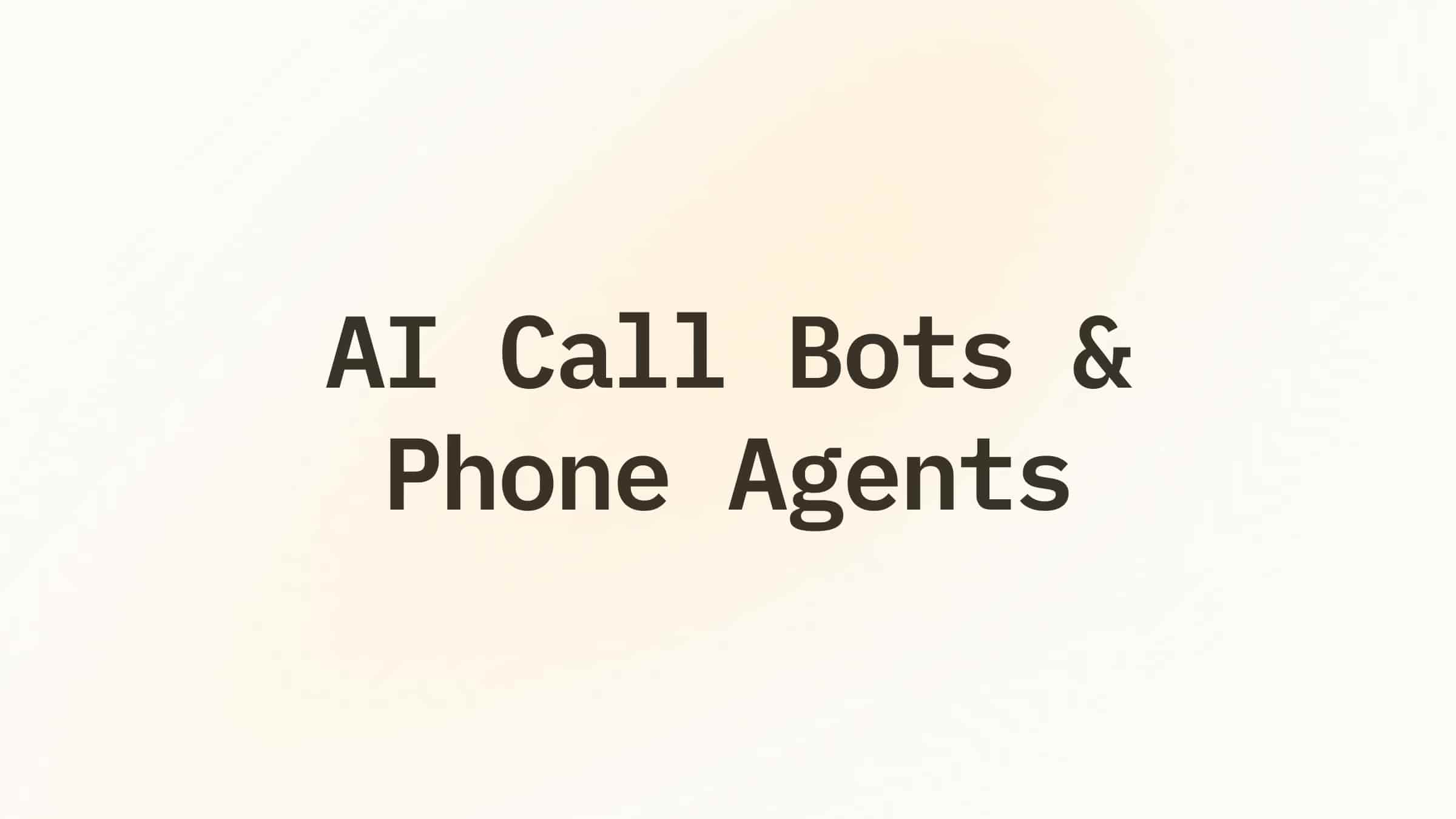
.png)
.png)